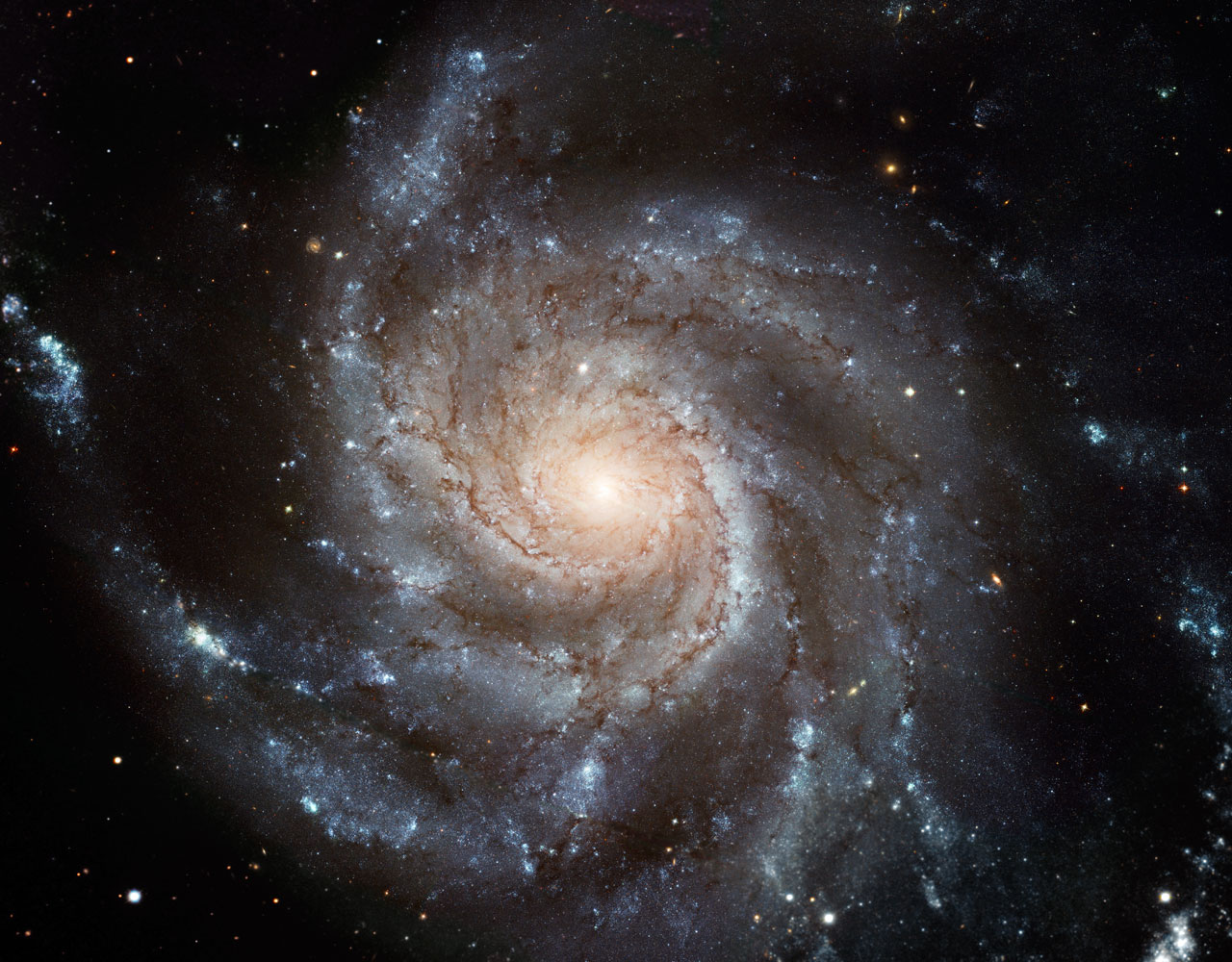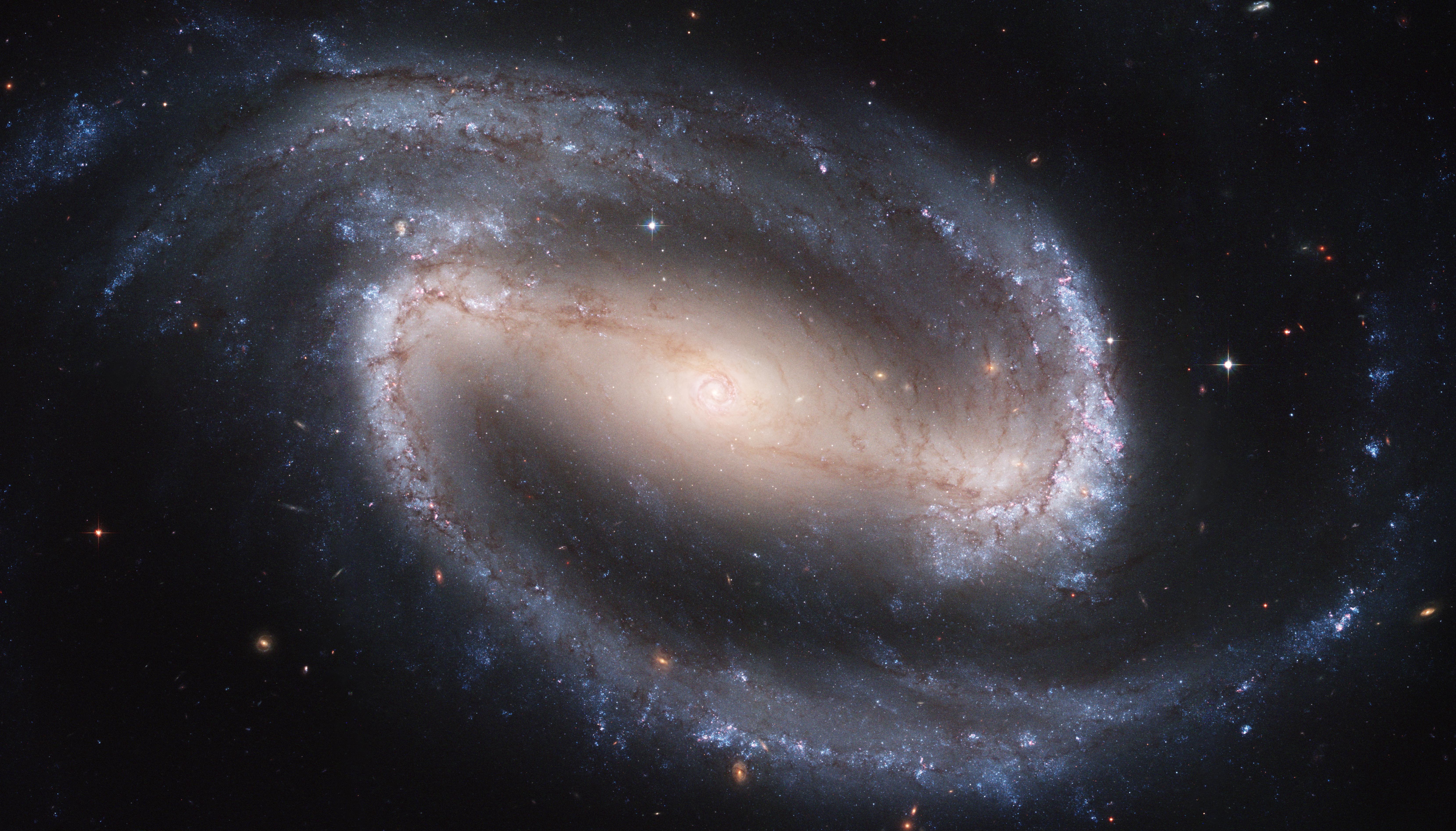
Whirlpool Galaxy
Image Credit:
Pinwheel Galaxy
Acknowledgement - K.Kuntz (GSFC), F.Bresolin (U.Hawaii), J.Trauger (JPL), J.Mould (NOAO), Y.-H.Chu (U. Illinois)
What constitutes a spiral galaxy? The spiral galaxy contains three main parts:
- Galactic Bulge
- Galactic Halo
- Galactic Disk
The galactic disk is the portion of the galaxy where the arms are. The arms wrap in the direction of rotation, i.e. in both images above, the direction of rotation is counterclockwise (anti-clockwise for those not used to American usage). The faster the rotation, the tighter the arms (see post on angular velocity why this happens). The disk is also where a lot of star formation occurs because of the abundance of gas and dust. As see in both images, the arms/disk are bluer than the rest of the galaxy. This implies that the stars in the disk tend to be younger than the rest of galaxy. Also, we know that generally the stars have a higher metal content because of their age. This is the portion of the galaxy where we expect to have habitable planets and possibly life. Consider the disk as the suburbs of the galaxy. Lots of stars but not too crowded.
The galactic halo has been mentioned before. This is the area where we find the globular clusters. The stars in the halo tend to be older and therefore, redder than the disk stars. There is very little gas and dust, so not much star formation occurs in the halo. We find little metals and therefore, probably few (if any) planets. This would be like the country. Lots of space, not heavily populated.
The galactic bulge is downtown. Very crowd with stars, gas, and dust. The portion of the bulge nearest the disk is bluer, while transiting towards the halo, the stars get redder. The center of the bulge most likely contains a supermassive black hole around which everything orbits.
Spiral galaxies actually have two types: normal spiral galaxies or barred spirals. Barred spiral galaxies have a bar of stars, gas, and dust crossing through the center of the bulge with the arms emanating from the ends of the bar.
Barred Spiral Galaxy NGC 1300
Image Credit:
Spiral galaxies can be differentiated by the tightness of their spirals and the size of their bulges.
- Sa and SBa: Very large bulge with tightly wound arms
- Sb and SBb: Medium-sized bulge with less tightly wound arms
- Sc and SBc: Small bulge with loose arms
- Sd and SBd: Very small bulge with almost open arms


No comments:
Post a Comment